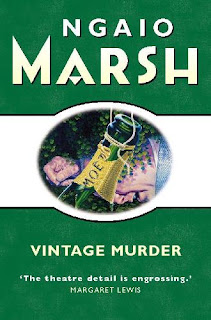A Miss Silver mystery with a bonus romance for the reader
 |
| The action in The Chinese Shawl takes place among guests at a country house |
However, the
murder victim was portrayed by the author as such an unpleasant character that
until their violent death 120 pages into the book, I was thinking more along
the lines of ‘when are they going to do it?’ or, ‘I wish they would just get on
with it and do it,’ until the murderer strikes at last.
The novel is
set against the backdrop of World War II and features a group of young people,
who are all closely connected with each other, attending a weekend house party
at an old house called the Priory. Some of the men are enjoying leave, or are
convalescing after being wounded, and a tangle of troubled relationships and
past liaisons between them and the women add to the tension.
Unusually,
for what is essentially a crime novel, there is a romance at the heart of the
book and a family feud potentially standing in its way. Although the previous Miss
Silver mysteries usually had a couple falling in love among the characters, the
romance element in this novel is far more closely tied up with the plot
 |
| The Chinese Shawl is the fifth Miss Silver mystery |
Miss Silver
has been invited in her capacity as a private detective by an old school friend
to stay at the Priory and try to solve a series of thefts that have been happening.
The lady detective gets to the bottom of the thefts quickly, but is still
staying in the house when the murder takes place.
The
detection element mainly consists of the police superintendent, Randal March,
listening patiently to Miss Silver’s theories about the case, which are based
on her instincts and judgment of character. The reason for his forbearance is
that Miss Silver used to be his governess. Miss Silver produces a large
quantity of pale pink and pale blue knitted matinee jackets and bootees while
she is discussing the case with him throughout the story.
The plot is
as intricately constructed as the baby clothes and, right at the centre of it,
is the Chinese shawl of the title, a colourful garment worn by one of the main
characters.
The murderer
is not revealed until the end of the book, after the author has skilfully
misdirected the reader during the last few chapters, while playing completely within
the rules.
I enjoyed
the first four Miss Silver mysteries but thought The Chinese Shawl was even
better. I would recommend the novel to detective fiction readers who like a bit
of romance on the side and enjoy a well-defined period setting.





.jpg)

.jpg)

.jpg)

